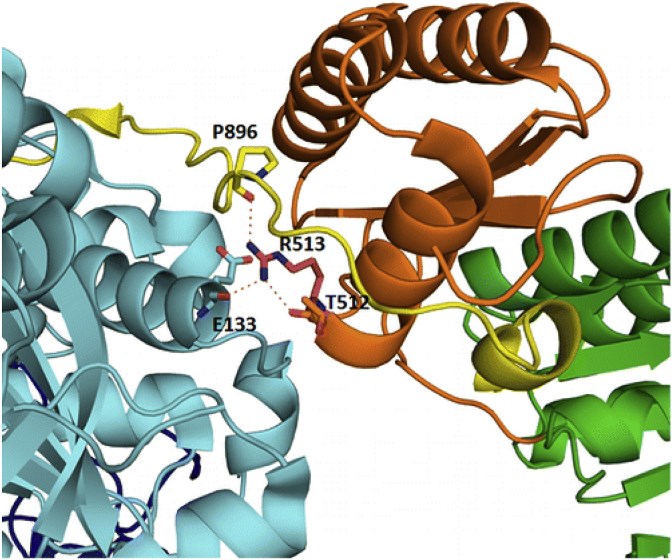CD Biosynsis is a leading expert in the field of enzyme design and evolution, with a long and in-depth experience in enzyme directed evolution. Our dedicated team utilizes evolutionary trace analysis to extract key information from enzyme sequences, providing valuable insights for the rational design of enzymes with improved properties or novel functions.
Overview
Enzymes are biological macromolecules produced by living cells with special catalytic effects. However, most enzyme reactions in biological organisms need to be carried out under mild conditions, which also leads to poor stability and tolerance of enzymes. Also, the activity of enzymes is easy to be decreased in high heat, strong acidic environment or high ionic concentration, which greatly limits the in vitro application and promotion of enzymes. Therefore, the structural modification of enzymes to improve their stability or catalytic activity has been a hot and difficult issue in research.
With the wide application of the Evolutionary Trace (ET) analysis, the relationship between the amino acid sequence structure of enzymes and their function has been recognized. Through sequence comparison between homologous proteins and the relationship between sequence changes and evolutionary differences, it is possible to identify amino acid sites associated with thermal stability and to alter the molecular structure of enzymes through targeted mutagenesis or sequence design, thereby improving enzyme stability.
 Fig 1. Critical arginine salt bridge mediating contact between the KS-AT linker. (Drufva EE, et al., 2020)
Fig 1. Critical arginine salt bridge mediating contact between the KS-AT linker. (Drufva EE, et al., 2020)
Our Services
Based on the evolutionary trace method, our EnzymoGenius™ platform provides multiple strategies for enhancing enzyme stability through structural modification.
- Increasing the Rigidity of the Flexible Region
The stability of an enzyme molecule mainly depends on the rigidity of its structure. The more rigid a protein is, the more stable it is, so the flexible regions of an enzyme molecule can be modified to increase its rigidity in order to improve stability.
- Enhancing Inter-subunit Interactions
For multi-subunit enzymes, the overall conformation of the enzyme molecule is maintained between subunits through forces such as van der Waals forces, hydrogen bonding, and electrostatic interactions. Therefore, enhancing the interactions between the enzyme subunit interfaces is also a way to improve enzyme stability.
- Introduction of Salt Bridges:
Optimization or introduction of salt bridges between charged residues can enhance electrostatic interactions within the enzyme structure. By maintaining an appropriate conformation, the overall stability of the enzyme can be improved.
- Introduction of Disulfide Bonds
Disulfide bonds play an important role in maintaining the function and stability of most proteins, and the introduction of disulfide bonds in appropriate regions of enzyme molecules is also a way to improve enzyme stability.
- Glycosylation Modification
Glycosylation modifications can reduce protein aggregation, facilitate its correct folding, and increase the rigidity of proteins to enhance their stability.
What We Can Offer
- Predict of Enzyme Modification Sites
We can use the enzyme evolutionary trajectory approach, combined with computational tools such as homology modeling and molecular dynamics simulation, to predict regions in the enzyme that may be related to stability, thus guiding targeted efforts to improve enzyme stability.
- Providing Diversified Enzyme Structure Modification Methods
Based on the prediction results of enzyme evolution tracking methods, we can provide corresponding enzyme structure modification strategies, bridging the gap between the prediction results of evolution tracking and the actual stability modification.
CD Biosynsis strives to offer comprehensive and reliable enzyme evolution trace analysis for various applications, whether academic research, industrial applications, or biotechnological development, our services are tailored to meet your specific requirements. Contact us today to learn more about our enzyme evolutionary trace analysis services and how they can benefit your research or development projects. Our team is ready to assist you and provide the insights you need to achieve your goals.
Reference
- Drufva, EE.; et al. Site directed mutagenesis as a precision tool to enable synthetic biology with engineered modular polyketide synthases. Synth Syst Biotechnol. 2020, 5(2):62-80.

































 Fig 1. Critical arginine salt bridge mediating contact between the KS-AT linker. (Drufva EE, et al., 2020)
Fig 1. Critical arginine salt bridge mediating contact between the KS-AT linker. (Drufva EE, et al., 2020)